Dagstuhl Seminar 19261
Distributed Computing with Permissioned Blockchains and Databases
( Jun 23 – Jun 28, 2019 )
Permalink
Organizers
- C. Mohan (IBM Almaden Center - San Jose, US)
- Beng Chin Ooi (National University of Singapore, SG)
- Andreas Reuter (Heidelberg Laureate Forum Foundation, DE)
- Gottfried Vossen (Universität Münster, DE)
Contact
- Shida Kunz (for scientific matters)
- Annette Beyer (for administrative matters)
A new era is emerging in the world of distributed computing with the growing popularity of blockchains. Traditionally, the Internet allows to exchange only data or information directly between two parties or users; a transaction, say, involving the purchase of an item requires a third party which can be trusted. Third parties often come in the form of a digital marketplace, a bank, or a trusted intermediary. Blockchains can eliminate third parties, since they are characterized by transparency, i.e., the blockchain content is visible to each participant, and being append-only, which is crucial for updating a blockchain. Conceptually, a blockchain is a decentralized and distributed digital ledger that consists of records representing transactions; since these records are tied to their history using hash values no existing record can be altered retroactively. The only kind of update allowed is to extend a given blockchain by additional records, which, assuming that the majority of participants does not pursue a dishonest intention, results in a stable view on transactions (which implies that not every party or node maintaining the blockchain needs to trust everybody else). The participants can verify and audit transactions, which results in a trustable workflow where participants' uncertainty regarding data security is marginal. The use of a blockchain also eliminates infinite reproducibility of digital assets; it confirms that each unit of value was transferred only once.
By storing data across its network, the blockchain eliminates the risks that come with data being held centrally yet opens up for an application of distributed technology that was previously developed in other contexts. Blockchains come in two flavors: An open, permissionless, or public, blockchain network does not require any guarding against bad actors, and no access control is needed; anybody can join and leave. Hence applications can be added to the network without the approval or trust of others, using the blockchain as a transport layer. Permissioned (private) blockchains are emerging as open source protocols where openness and collaboration are encouraged among authenticated participants. They can hence restrict who can participate in the consensus processes as well as who can transact.
From a database point of view, a blockchain can be considered as a log of ordered transactions since nodes keep replicas of the data and agree on an execution order of the transactions. A key property is the assumption that nodes behave in an arbitrary or Byzantine fashion. By being able to tolerate Byzantine failure by design, a blockchain offers stronger security than a database system. Although enterprise-grade database systems support applications like security trading and settlement, asset and finance management, or banking and insurance, blockchain technology has the potential to disrupt the status quo since they incur lower costs of infrastructure and human labor. In particular the immutability and transparency of a blockchain reduce human error as well as the need for manual intervention due to conflicting data.
While there is currently no standard in the blockchain space, all the ongoing efforts involve some combination of database, transaction, encryption, consensus and other distributed systems technologies. Some of the application areas in which blockchain pilots are being carried out are: smart contracts, supply chain management, know your customer, derivatives processing and provenance management. This seminar will survey some of the ongoing blockchain projects with respect to their architectures in general and their approaches to some specific technical areas. It will focus on how the functionality of traditional and modern data stores are being utilized or not utilized in different blockchain projects. It will also distinguish how traditional distributed database management systems have handled replication and how blockchain systems do it.
 C. Mohan, Beng Chin Ooi, Andreas Reuter, and Gottfried Vossen
C. Mohan, Beng Chin Ooi, Andreas Reuter, and Gottfried Vossen
The topic of blockchains, and in particular that of permissioned blockchains, has rapidly gained interest in both the industrial and the research communities in recent years. It particularly pertains to situations where trust among several parties that are about to do business together is difficult to establish (e.g., due to organizational, financial, or timing reasons) or impossible to establish at all. A blockchain is a decentralized, distributed ledger that consists of immutable blocks containing transactions that can be accessed by any party, and that provides trust via replication over all nodes and an agreed-upon execution order of the transactions. Of particular interest are permissioned blockchains in which the associated parties are known and authenticated, yet still do not fully trust each other.
Many applications have shown interest in the concept of blockchains, since the situation just described applies to many real-world scenarios, including (global) supply chains, the Internet of Things, connected cars, manufacturing, banking, and healthcare. As a consequence, a number of players in the IT industry work on a development of the technology, and several consortia have been formed to advance the technology across industries, among them Hyperledger and R3. Moreover, a number of companies have released Blockchain-as-a-Service (BaaS) platforms, including IBM, Oracle, Amazon, Baidu, and Alibaba.
The technology has many links into the database community; however, the situation is basically like it was in the database area many years ago, when only a few systems had been released but users were on their own to figure out how to use them effectively. As the seminar has shown, many interesting issues remain to be solved, and there is a wide variety of aspects and research issues currently under investigation. Of these, the following were discussed:
- Blockchain scalability w.r.t. transaction throughput, one of the main roadblocks to business adoption
- Transaction ordering and endorsement, consensus of transaction commit
- AAdjustments to the Proof of Work (PoW) consensus mechanism, other optimizations to consensus algorithms (e.g., Byzantine consensus) in the presence of transaction failures and in light of scalability
- Block validation
- Languages for smart-contract specification (e.g., Sandcastle SQL and Solidity)
- Amendments to Hyperledger Fabric, such as channels
- Cross-chain swaps using hashed timelocks
- Energy efficiency of blockchain applications
 C. Mohan, Beng Chin Ooi, and Gottfried Vossen
C. Mohan, Beng Chin Ooi, and Gottfried Vossen
- Divyakant Agrawal (University of California - Santa Barbara, US) [dblp]
- Alysson Neves Bessani (University of Lisbon, PT) [dblp]
- Jeeta Ann Chacko (TU München, DE)
- Lei Chen (HKUST - Kowloon, HK) [dblp]
- Mariano P. Consens (University of Toronto, CA) [dblp]
- Tien Tuan Anh Dinh (Singapore University of Technology and Design, SG) [dblp]
- Alan Fekete (The University of Sydney, AU) [dblp]
- Michael J. Franklin (University of Chicago, US) [dblp]
- Vincent Gramoli (The University of Sydney, AU) [dblp]
- Krishna P. Gummadi (MPI-SWS - Saarbrücken, DE) [dblp]
- Michael Huth (Imperial College London, GB) [dblp]
- Hans-Arno Jacobsen (TUM, DE & Univ. Toronto, CA) [dblp]
- Murat Kantarcioglu (University of Texas - Dallas, US) [dblp]
- Srinivasan Keshav (University of Waterloo, CA) [dblp]
- Shahan Khatchadourian (Toronto, US) [dblp]
- Dilip Krishnaswamy (Reliance Jio Infocomm Ltd., IN) [dblp]
- Juho Lindman (University of Gothenburg, SE) [dblp]
- Eric Lo (The Chinese University of Hong Kong, HK) [dblp]
- Dumitrel Loghin (National University of Singapore, SG) [dblp]
- Alexander Löser (Beuth Hochschule für Technik - Berlin, DE) [dblp]
- Bernhard Mitschang (Universität Stuttgart, DE) [dblp]
- C. Mohan (IBM Almaden Center - San Jose, US) [dblp]
- Hart Montgomery (Fujitsu Labs of America Inc. - Sunnyvale, US) [dblp]
- Pezhman Nasirifard (TU München, DE) [dblp]
- Beng Chin Ooi (National University of Singapore, SG) [dblp]
- Torben Bach Pedersen (Aalborg University, DK) [dblp]
- Dennis Przytarski (Universität Stuttgart, DE)
- PingCheng Ruan (National University of Singapore, SG) [dblp]
- Gabriela Ruberg (Banco Central do Brasil - Rio de Janeiro, BR) [dblp]
- Mohammad Sadoghi (University of California - Davis, US) [dblp]
- Yong Tang (Univ. of Electronic Science &Technology - Chengdu, CN) [dblp]
- Gottfried Vossen (Universität Münster, DE) [dblp]
- Li Xiong (Emory University - Atlanta, US) [dblp]
- Feida Zhu (SMU - Singapore, SG) [dblp]
Classification
- data bases / information retrieval
- security / cryptology
- world wide web / internet
Keywords
- blockchain technology
- distributed systems
- smart contracts
- database systems
- data science
- privacy
- cryptocurrency

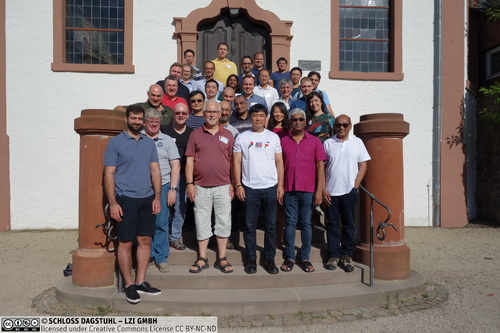
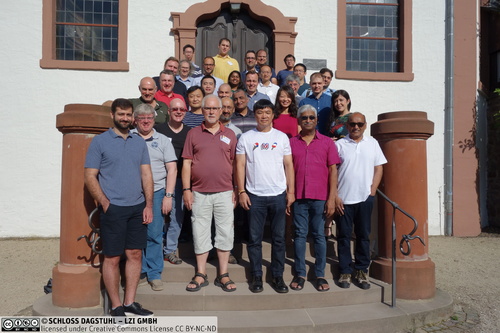
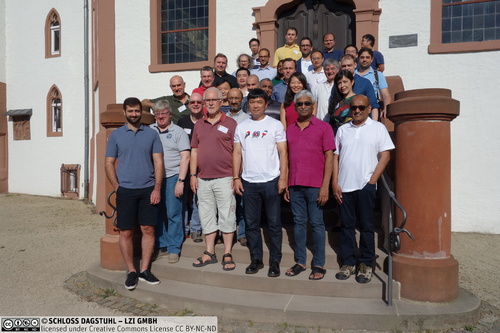
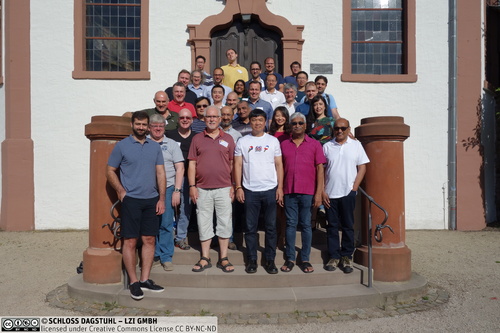
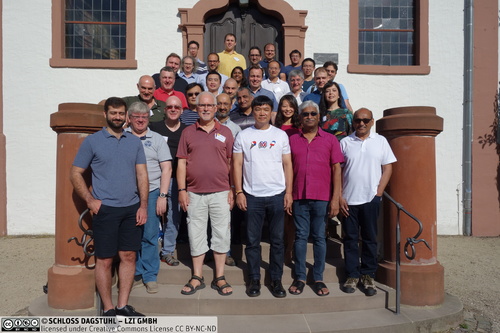
 Creative Commons BY 3.0 DE
Creative Commons BY 3.0 DE
